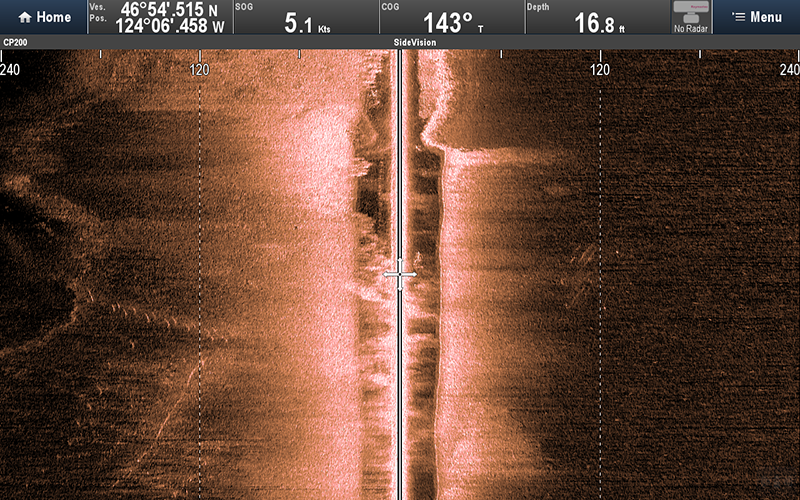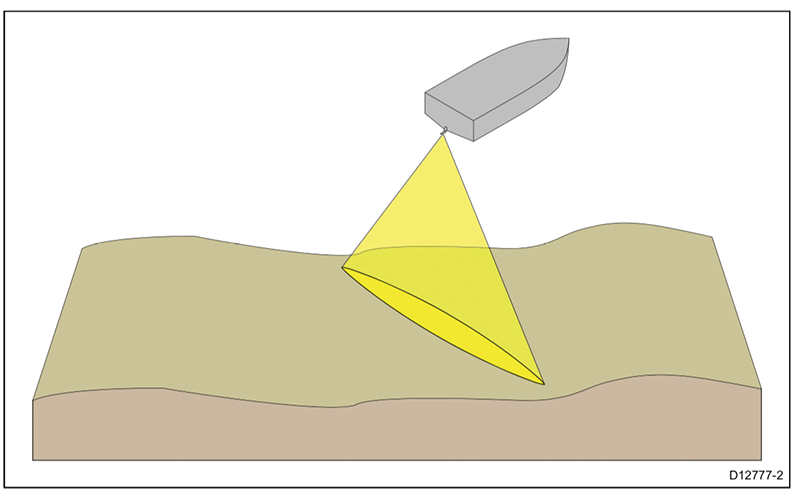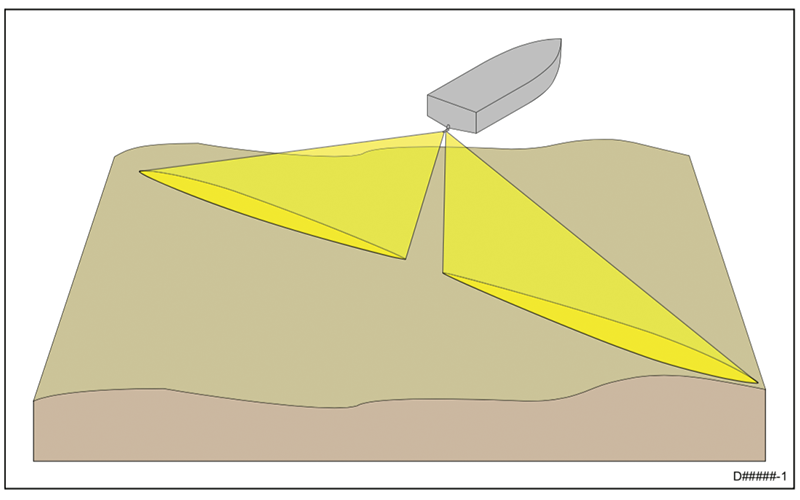
Most CHIRP transducers send out a cone-shaped beam that gets wider the deeper it goes. The on-screen image that results shows detail of all the fish in that conical volume of water.
Down-view CHIRP transducers take a different approach. They send out a sonar signal that is very thin in the forward-aft direction, but very wide side-to-side. As the boat moves ahead, this fan-shaped beam can draw an image of the contours of the bottom of the sea.
Side-view CHIRP transducers use a beam shape that focusses energy to the sides rather than directly below the boat.
The drawback of these systems is that they use very high frequency bands, in the ranges 450-500kHz and 800-850kHz. This means that the sonar cannot penetrate far into the water. The systems are only effective in relatively shallow water down to about 200 ft.
Raymarine calls its systems SideVision and DownVision. Garmin calls them SideVü and DownVü.


